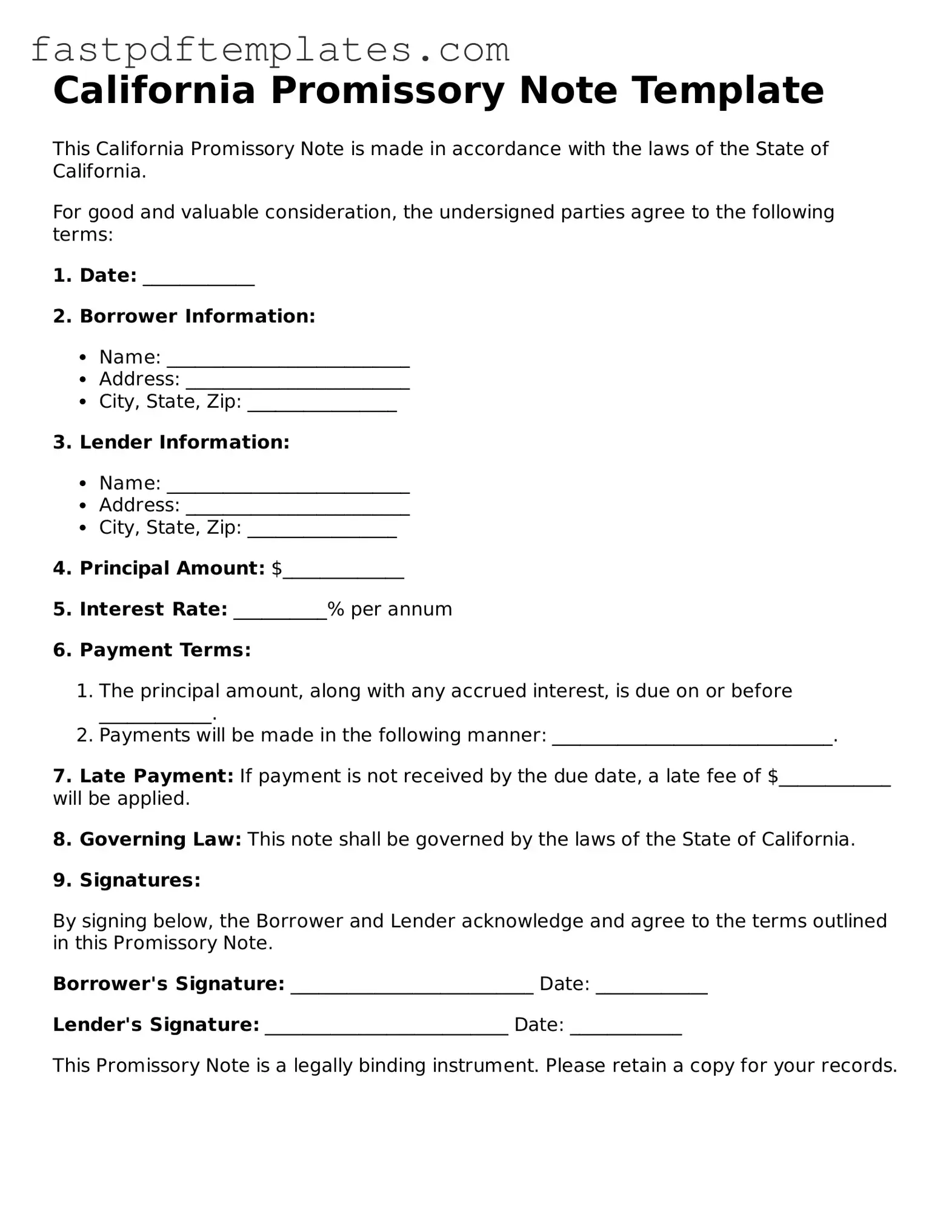California Promissory Note Template
This California Promissory Note is made in accordance with the laws of the State of California.
For good and valuable consideration, the undersigned parties agree to the following terms:
1. Date: ____________
2. Borrower Information:
- Name: __________________________
- Address: ________________________
- City, State, Zip: ________________
3. Lender Information:
- Name: __________________________
- Address: ________________________
- City, State, Zip: ________________
4. Principal Amount: $_____________
5. Interest Rate: __________% per annum
6. Payment Terms:
- The principal amount, along with any accrued interest, is due on or before ____________.
- Payments will be made in the following manner: ______________________________.
7. Late Payment: If payment is not received by the due date, a late fee of $____________ will be applied.
8. Governing Law: This note shall be governed by the laws of the State of California.
9. Signatures:
By signing below, the Borrower and Lender acknowledge and agree to the terms outlined in this Promissory Note.
Borrower's Signature: __________________________ Date: ____________
Lender's Signature: __________________________ Date: ____________
This Promissory Note is a legally binding instrument. Please retain a copy for your records.
